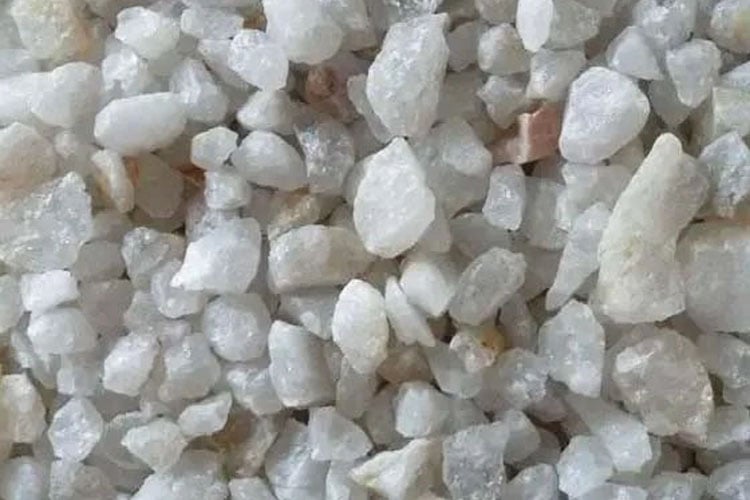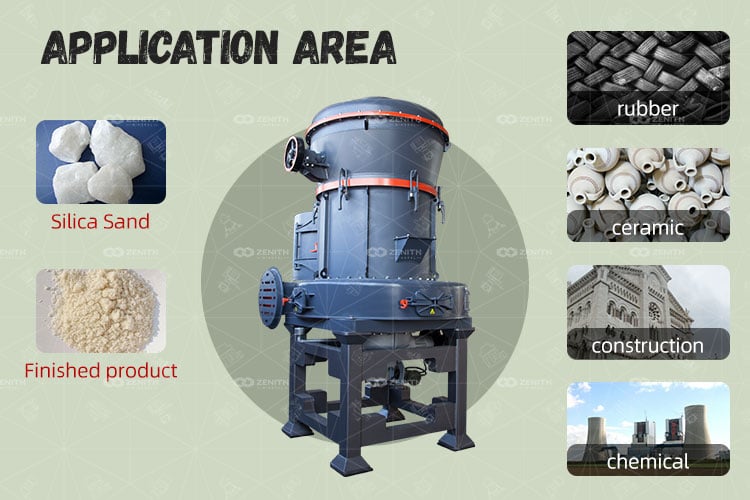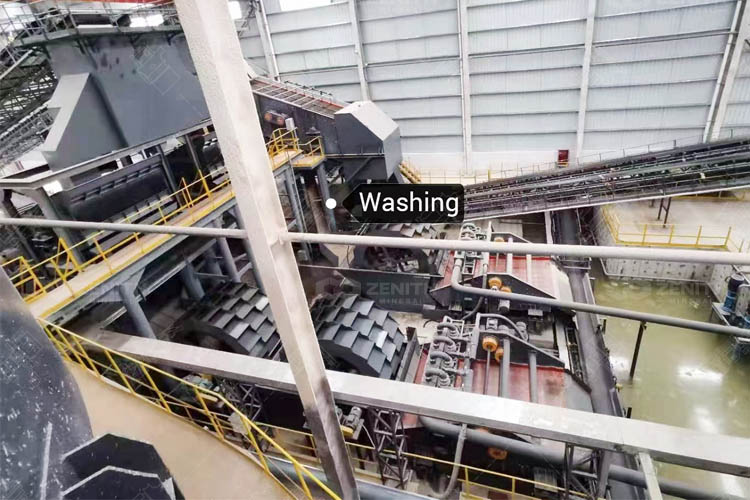Silica sand, a seemingly unassuming material, has quietly become one of the construction industry's most valuable treasures. Composed primarily of silicon dioxide, this mineral marvel is found in abundance across the globe, hiding in plain sight as a versatile and indispensable resource.
In this comprehensive exploration, we will delve into the intriguing world of silica sand, uncovering its origins, uncovering its diverse applications, and examining the innovative ways in which this shimmering treasure is shaping the future of our built environment.
At its core, silica sand is a type of sand that is composed of tiny granules of quartz, a mineral that is remarkably abundant in the Earth's crust. This sand, with its high silica content typically around 95%, possesses a unique set of properties that make it an invaluable material in a wide range of industries.
The term "silica" itself is derived from the Latin word "silex," meaning flint, a nod to the mineral's natural origins. The quartz crystals that make up silica sand form tiny hexagonal prisms with flat sides, giving the sand a distinctly uniform and polished appearance. This crystalline structure, combined with the sand's exceptional hardness, strength, and durability, are the hallmarks that have made silica sand an indispensable resource.

Silica sand is a naturally occurring material, formed over thousands of years through a process of erosion and deposition. The journey of silica sand begins with the weathering of rocks containing quartz, a resilient mineral that is a key component of granite and other igneous formations.
As these rocks are subjected to the relentless forces of wind, water, and glacial movements, the quartz crystals are gradually broken down into smaller and smaller fragments. These tiny particles are then carried downstream by rivers and streams, eventually reaching coastal areas or other bodies of water.
The constant pounding of waves against the shoreline further refines and smooths the quartz grains, creating the uniform, rounded particles that characterize silica sand. This natural process of erosion and deposition has resulted in the formation of vast deposits of high-quality silica sand in many parts of the world, from coastal regions to deserts and riverbeds.
In addition to its natural formation, silica sand can also be produced artificially through various processes such as crushing, washing, and drying. These methods are commonly used to create high-purity silica sand for specialized applications, such as in the manufacturing of glass, electronics, and certain chemical products.
The extraction and processing of silica sand involve a carefully orchestrated series of steps, each designed to ensure the consistent quality and purity of the final product.
Silica sand is extracted from a variety of natural deposits, including deserts, beaches, mountains, and riverbeds. The sand is a sedimentary rock that is composed primarily of quartz, and it is mined using both surface and underground methods.
Surface mining involves the removal of overburden, or the layer of soil and rock that covers the sand deposits, to expose the mineral-rich sand. This method is generally less expensive than underground mining, but it can have a more significant impact on the surrounding environment.
Underground mining, on the other hand, involves drilling deep into bedrock to access the sand deposits. This approach is typically more environmentally friendly, as it disturbs a smaller surface area during the extraction process. However, it is also more costly and requires more specialized equipment.
Read Also:Silica Sand Processing Plant
Once the silica sand has been extracted, it must undergo a series of drying and screening processes to ensure that it meets the necessary specifications for its intended use. The sand is first dried to remove any excess moisture, which can cause issues in manufacturing processes or even lead to safety hazards.
Following the drying process, the sand is then screened to separate the particles into various size fractions. This step is crucial, as different applications may require different particle sizes to achieve the desired performance characteristics.
Throughout the extraction and processing stages, the silica sand undergoes rigorous quality control and testing to ensure that it meets the stringent standards set by manufacturers and regulatory bodies.
Quality control involves inspecting the final product to verify that it meets specifications for size, shape, and other key properties, such as hardness and density. This process helps to ensure that the silica sand is fit for use in a wide range of applications, from construction to electronics.
Additionally, the sand is subjected to a variety of laboratory tests to assess its chemical composition, purity, and overall suitability for specific uses. These tests help to identify any potential impurities or defects that could compromise the performance of the final product.
The remarkable versatility of silica sand has made it an indispensable material across a wide range of industries, from construction and manufacturing to agriculture and energy production.
In the construction industry, silica sand is a crucial component in the production of concrete, mortar, and other building materials. The high strength and durability of this mineral make it an ideal additive, helping to create structures that can withstand the test of time and the elements.
Beyond its role in the construction of buildings, silica sand also plays a vital part in the creation of roads and other infrastructure. As an aggregate in asphalt and the base layer for paved surfaces, silica sand provides the necessary strength and stability to support heavy loads and constant wear and tear.
The glass and ceramics industries have long relied on the unique properties of silica sand. The high silica content of this material is essential in the production of a wide range of glass products, from bottles and windows to fiberglass and computer screens.
In the ceramics industry, silica sand is a key ingredient in the creation of tiles, tableware, and other ceramic goods. Its ability to withstand high temperatures and its resistance to weathering make it an ideal choice for these applications.
The electronics industry has also embraced the benefits of silica sand, utilizing it as an insulator in the production of semiconductor chips and other delicate electronic components. The consistent particle size and high purity of this material make it an essential component in the creation of cutting-edge technologies.
Beyond the electronics sector, silica sand has found applications in a variety of manufacturing processes, including the production of abrasives, foundry molds, and even some types of medical products.
Silica sand's versatility extends to the world of landscaping and gardening, where its unique properties make it a valuable addition to a wide range of projects. Its ability to enhance drainage and moisture retention, coupled with its natural aesthetic appeal, have made it a popular choice for use in artificial turf, decorative landscaping, and even as a soil additive to improve plant growth.
In the agricultural sector, silica sand is used as a fertilizer additive, helping plants to more efficiently absorb the nutrients they need. In the water filtration industry, this material is a critical component, removing contaminants and purifying water for both residential and industrial use.
Perhaps one of the most surprising applications of silica sand can be found in the energy sector, where it plays a vital role in the process of hydraulic fracturing, or "fracking." The unique properties of this material, including its ability to hold water and keep cracks in rock formations open, make it an essential component in the extraction of natural gas and oil.
As we have explored, silica sand is a truly remarkable material, a shimmering treasure that has become an indispensable component in the construction, manufacturing, and industrial sectors. As the global demand for silica sand continues to rise, driven by the ever-expanding needs of the modern world, it is clear that this material will play an increasingly vital role in the years to come.
Through a deeper understanding of the extraction, processing, and application of silica sand, as well as a unwavering commitment to environmental stewardship and responsible resource management, we can ensure that this shimmering treasure continues to shine brightly, serving as a foundation for the construction and development of a better, more sustainable future.

From the perspective of development process, silica sand is widely used in glass, casting, ceramics and refractory materials, metallurgy, construction, chemical industry, plastics, rubber, abrasives and other industries.

To get silica sand, we need crushing and grinding process if the raw material is large and in silica sand production plant, silica sand grinding machine is the key equipment.

If you want to know about the profit, you must first understand the cost composition in the silica sand washing plant.
Fill your requirements here, and we'll send the custmized solution and quotation to you by the reserved contact information.